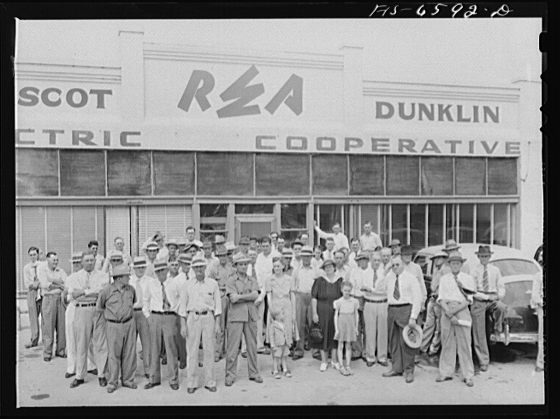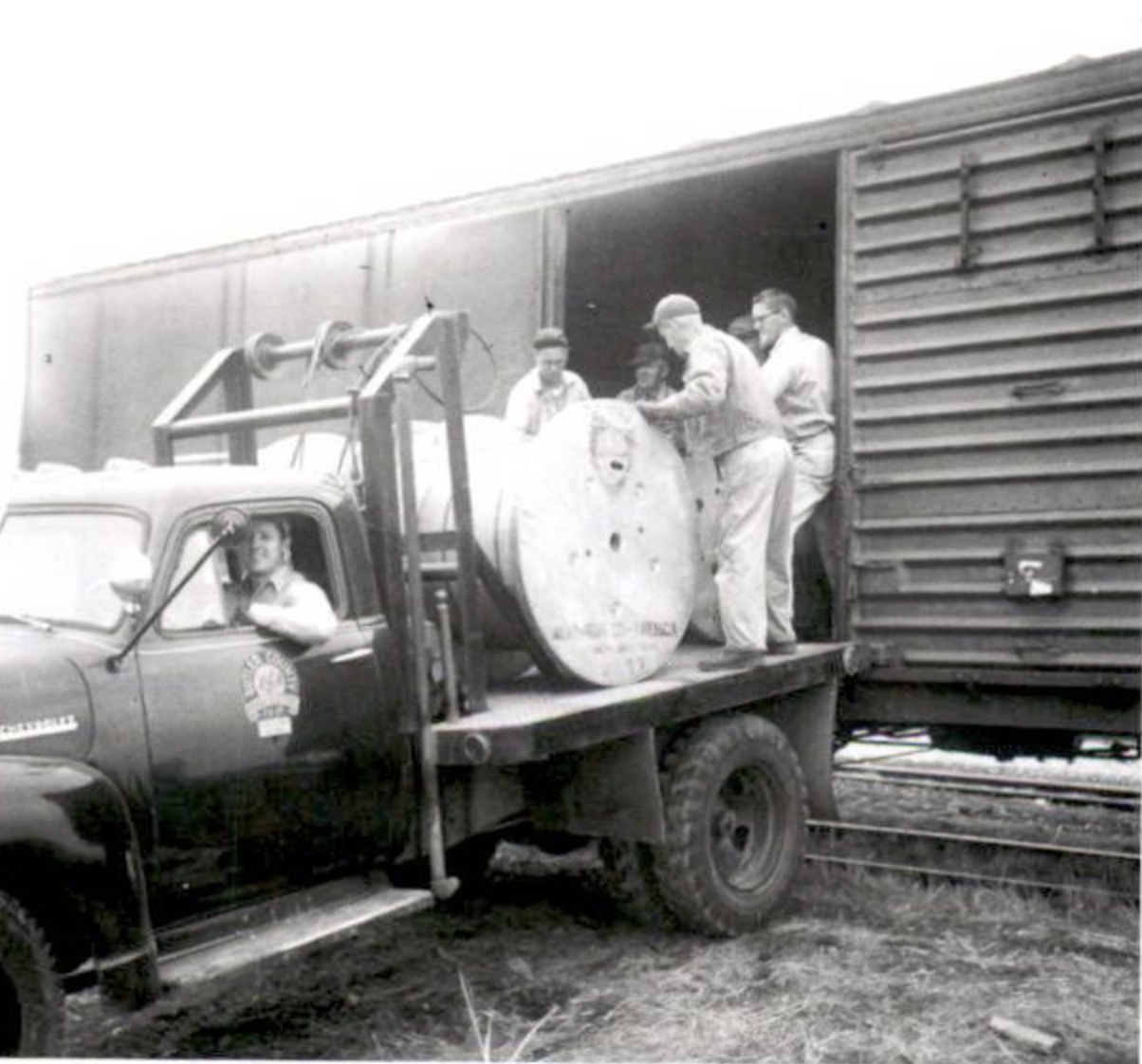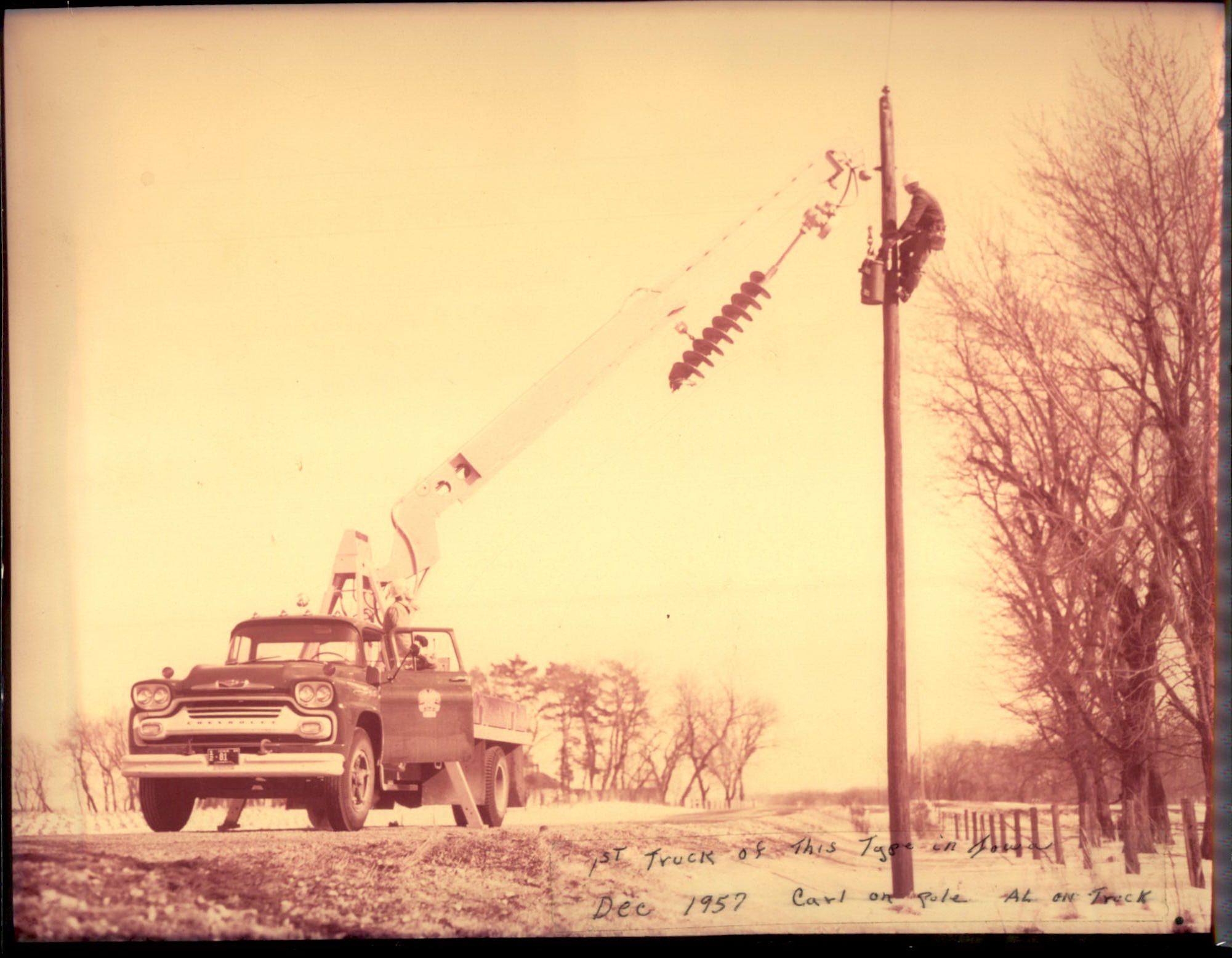While farming cooperatives existed for centuries, they presented a new approach for providing rural electricity that had no roadmap. Thus, in 1937, the REA created model guidelines for states, which directed that co-ops should be nonprofit and led by member-elected boards, with each member having one vote. To join, members had to pay a five-dollar fee, a substantial sum during the Great Depression.
A Cooperative Approach
(Cooperative Connections, Nov. 2019, Vol. 20, No. 7)
Profitability Problems
Due to profitability problems, private utilities made clear they had no interest in using the REA's low-cost loan provisions to electrify rural areas. In response, farmers banded together, formed rural electric cooperatives, and applied for loans through the REA to light up the rural frontier.
"There was some unfavorable language in the loan offers to the private utilities that placed restrictions on what they could do if they took the money, and they couldn't work those details out."
-Carl Kitchens, Florida State University Economic Historian (Econ Focus, 2020)
Rural Electric Cooperatives

"Becoming a cooperative member. Farmers who wanted to electrify their farm, needed to sign up and pay a membership fee." (South Dakota State Archives, April 1945)

"Members of the U.S. Rural Electrification Administration Cooperative at the annual meeting." (Rothstein, Library of Congress, 1942)

(Rural Electric Cooperative Association, c. 1940)
"The membership itself is probably the most significant [factor] that makes cooperatives work and a board of directors that takes on the responsibility to make sure they look after its members. It's a member-run organization that works very well."
-Duane Rieckenberg, Butler County REC Board President (Personal Interview, 16 Feb. 2023)

(Wallaces' Farmer, 16 Jan. 1937)
REA's low-cost loans provided funds to co-ops for transmission lines and farmers for wiring and home appliances. Also, REA engineers created cost efficiencies through designing single-phase wires and developing standardized guidelines for utility pole placement.
"There were 20 poles per mile, about a mile a day, around 5 miles a week...You couldn't get it to them fast enough. At that time it was really kind of different, everybody was running, everybody wanted electricity and so it was go, go, go."
-94-year-old Carl Heyenga, Retired Butler County REC Operations Manager (Personal Interview, 16 Feb. 2023)

(Wallaces' Farmer, 7 Aug. 1948)

(Butler County REC Archives, April 1956)
Carl Heyenga's REC recollections (Personal Interview, 16 Feb. 2023)

"First truck of this type in Iowa. Carl on pole, Al on truck." (Butler County REC Archives, Dec. 1957)
Since most cooperatives did not generate power, the REA helped them negotiate with private utilities to purchase power wholesale. Where negotiations failed, the REA funded construction of cooperative-owned power sources, which reduced electric bills throughout the rural frontier.
"Our focus is with the stakeholders, not the shareholders, so we're not driven by a profit. Our interest is to make sure the members have reliable, safe, and affordable electricity on a 365-day-a-year basis."
-Craig Codner, Butler County REC General Manager (Personal Interview, 16 Feb. 2023)